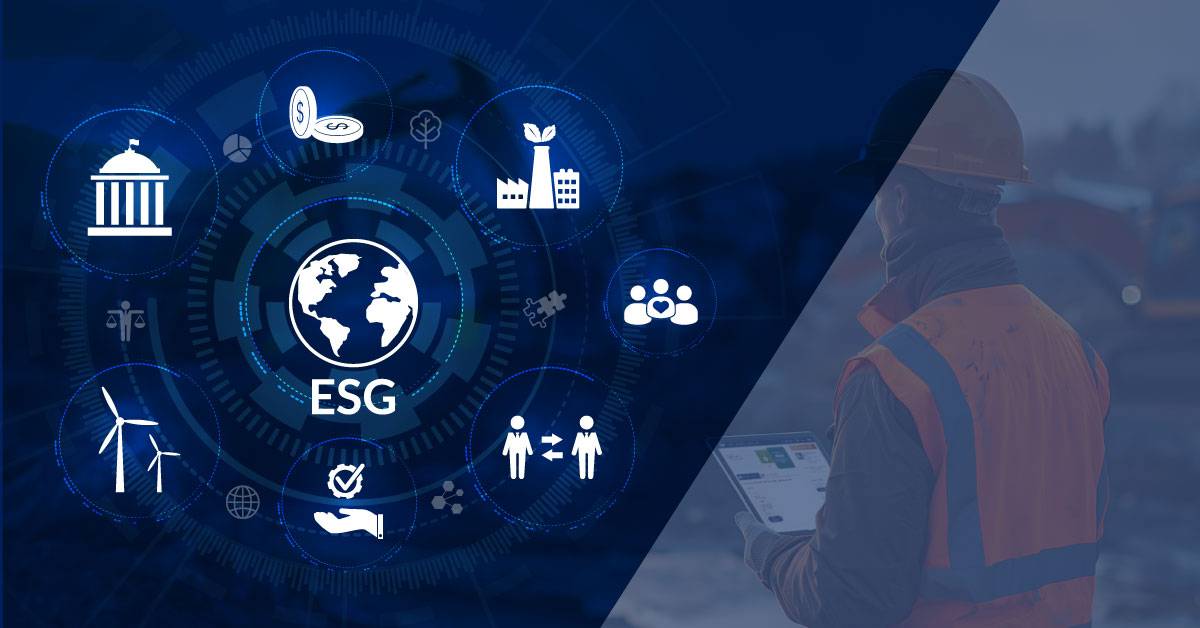In recent years, the business landscape has witnessed a significant shift towards sustainability and responsible corporate practices. At the forefront of this movement is the concept of Environmental, Social, and Governance (ESG). ESG criteria help form a framework used by investors and stakeholders to evaluate a company’s performance in these critical areas. As the world grapples with pressing environmental and social challenges, the importance of ESG continues to grow.
Understanding ESG
ESG encompasses three central pillars: Environmental, Social, and Governance.
Environmental
This aspect focuses on a company’s impact on the environment. It includes considerations such as carbon emissions, renewables, waste management, circular economy, resource conservation and loss of biodiversity, and efforts to mitigate climate change. Included in the environmental aspect is the unique right of First Nations people to access, maintain and protect their lands.
Social
Social factors delve into how a company manages relationships with its employees, suppliers, customers, and communities. Key issues include workplace health and safety, labour practices, diversity and inclusion, human rights, and community engagement, including First Nations peoples.
Governance
Governance relates to the internal systems and structures that guide corporate behaviour. Board diversity, executive compensation, cybersecurity, shareholder rights, ESG reporting, risk management, compliance with laws and standards, and transparency in financial reporting are all governance aspects.
The Importance of ESG in Modern Business
ESG considerations are no longer optional for organisations; they are increasingly imperative in the success and growth of modern businesses. Several factors drive this trend:
Investor Preferences: Investors are increasingly prioritising sustainable and socially responsible investments. Companies with strong ESG performance tend to attract more investment capital and enjoy lower costs of capital.
Regulatory Landscape: Governments around the world are implementing stricter regulations related to environmental protection, labour standards, and corporate governance. Adhering to ESG principles helps companies stay compliant with these evolving regulations.
Brand Reputation: Consumers are becoming more conscious of the social and environmental impact of their purchasing decisions. A strong ESG profile can enhance brand reputation, leading to increased customer loyalty and market share.
The Role of Safety in ESG:
Safety is a fundamental component of the “Social” pillar within ESG. Ensuring the health and safety of employees, customers, and communities is not only a moral obligation but also a business imperative. Safety-related issues, such as workplace accidents, product safety, and community health risks, can have profound consequences on a company’s reputation, financial performance, and legal liabilities.
Moreover, safety incidents can undermine trust and confidence among stakeholders, leading to erosion of shareholder value and increased regulatory scrutiny. Therefore, integrating safety considerations into ESG strategies is essential for building resilience and long-term sustainability. Management of health and safety directly influences customer satisfaction and employee engagement.
Digital Solutions for Managing Safety Risks in ESG
In today’s digital age, technology plays a pivotal role in helping businesses manage safety risks and fulfil their ESG obligations. Here’s how digital solutions are aiding in this endeavour:
Data Analytics: Advanced analytics tools enable companies to collect, analyse, and interpret vast amounts of safety-related data. By identifying trends, patterns, and potential risks, organisations can proactively implement measures to prevent accidents and improve safety performance.
IoT and Sensors: Internet of Things (IoT) devices and sensors provide real-time monitoring of safety conditions in workplaces, production facilities, construction projects, and supply chains. These technologies can detect hazards, track equipment performance, adherence to plans, and trigger alerts in case of emergencies or deviations, allowing for swift intervention and mitigation of potential risks.
AI-driven Safety Systems: Artificial Intelligence (AI) algorithms can predict and prevent safety incidents by analysing historical data and identifying risk factors. AI-powered safety systems can also enhance safety training programs, simulate hazardous scenarios, and optimise emergency response procedures.
Digital Compliance Management: Digital platforms streamline compliance management processes by centralising documentation, automating reporting tasks, and providing real-time visibility into regulatory requirements. These solutions help ensure that companies meet their safety obligations and maintain transparency with stakeholders.
It is important to note that whilst AI and wholly digital technologies are exciting and rapidly developing, there is still significant risk in placing too much trust in their ability to ensure safety and compliance in your supply chain. These should be seen as tools, enablers, and accelerants, to be used in the hands of qualified and competent individuals who can make important decisions and direct resources appropriately.
How businesses use Cm3 to manage ESG criteria
Cm3’s core functionality as a contractor compliance management ecosystem equips clients with the tools to bolster their confidence in the capabilities of the suppliers and contractors they engage. By assessing against specific compliance requirements, businesses are able to demonstrate their due diligence in providing a safe working environment for employees and contractors.
Cm3 supports their customer efforts by providing:
- Confidence that Cm3 compliant suppliers and contractors have been independently assessed to determine that the necessary safety and environmental measures in place, so they work safely without causing harm to people or the environment while on customer sites
- Tailored ESG compliance criteria, such as HVNL Chain of Responsibility, Labour Hire Licensing and Environmental Impacts as well as workplace health and safety
- Transparency through data collection, dashboards, and reporting
- A platform for the delivery of critical safety information through inductions and training
- A platform for collection and verification of licences, authorities, and credentials
With an Australian-based team of qualified compliance coaches, Cm3 blends software and service to provide a robust and comprehensive solution to their customers who highly value safety and vendor compliance.
ESG has emerged as a critical framework for evaluating and improving the sustainability and ethical practices of businesses. Safety, as an integral component of the “Social” pillar within ESG, requires careful attention and proactive management. Leveraging digital solutions not only helps companies mitigate safety risks but also enhances their overall ESG performance. By integrating safety considerations into their broader ESG strategies, businesses can foster a culture of responsibility, resilience, and long-term value creation in the face of evolving societal and environmental challenges.
